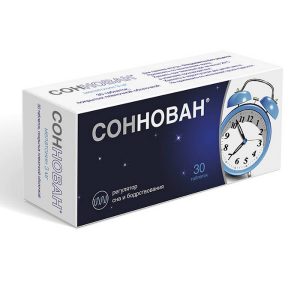Description
Release form
Hard gelatine capsules, size 3, opaque, green / cream, with the LILLY logo printed on them and identification code 3105, the contents of the capsules is white powder.
Packing
14 pcs. – blisters (1) – packs of cardboard.
Pharmacological Action
Antidepressant. It is a selective serotonin reuptake inhibitor, which determines its mechanism of action. Fluoxetine has almost no affinity for other receptors, for example, β1, β2 and βadrenoreceptors, serotonin receptors, dopamine receptors, histamine H1 receptors, m-cholinergic receptors, and GABA receptors.
Pharmacokinetics
Absorption
After oral administration, it is well absorbed from the gastrointestinal tract. Cmax is reached after 6-8 hours.
Oral bioavailability – more than 60%. Dosage forms of fluoxetine for oral administration are bioequivalent.
Distribution of
Binding to blood plasma proteins – more than 90%. Distributed throughout the body. Css in plasma is achieved after taking the drug for several weeks. Css after prolonged use of the drug is similar to the concentrations observed at 4-5 weeks of taking the drug.
Metabolism
Intensively metabolized in the liver to norfluoxetine and a number of other unidentified metabolites.
Excretion
Excreted in the urine as metabolites. T1 / 2 of fluoxetine is 4-6 days, and its main active metabolite is 4-16 days.
Indications
– depression of various etiologies
– bulimia nervosa
– obsessive-compulsive disorder
– premenstrual dysphoric disorder.
Contraindications
is an established hypersensitivity to fluoxetine.
Use during pregnancy and lactation
In experimental animal studies, no direct or indirect negative effect of fluoxetine on the development of the embryo or fetus or on the course of pregnancy was revealed. In vitro and animal studies have not received evidence of mutagenicity and impaired fertility. Since animal reproduction studies do not always allow predicting a human reaction, Prozac should be used during pregnancy only in cases of emergency.
Fluoxetine is excreted in breast milk, therefore, the drug should be used with caution in nursing mothers.
The effect of fluoxetine on the birth process in humans is unknown.
Special instructions
There are reports of skin rashes, anaphylactic reactions and progressive systemic disorders involving the skin, lungs, liver, and kidneys in patients with fluoxetine. If skin rash or other possible allergic reactions occur, the etiology of which cannot be determined, Prozac should be discontinued.
As with other antidepressants, Prozac should be used with caution in patients with a history of epileptic seizures.
When using fluoxetine, there have been cases of hyponatremia (in some cases, the sodium level in the blood was less than 110 mmol / l). Basically, similar cases were observed in elderly patients and in patients receiving diuretics, due to a decrease in bcc.
In patients with diabetes mellitus during treatment with Prozac, hypoglycemia was noted, and after discontinuation of the drug – hyperglycemia. At the beginning and after the end of treatment with fluoxetine, dose adjustment of insulin and / or hypoglycemic drugs for oral administration may be required.
Results of experimental studies of
No evidence of carcinogenicity has been obtained in in vitro and animal studies.
Pediatric use
Safety and efficacy of Prozac in children have not been established.
Influence on the ability to drive vehicles and control mechanisms
Drugs that affect mental activity can affect decision-making ability and car driving skills. Patients should be advised to avoid driving a car or operating hazardous machinery until it is established that there is no effect of the drug on their ability to perform these types of activities.
Composition of
fluoxetine (in the form of hydrochloride) 20 mg
Excipients: starch, dimethicone.
Composition of the capsule shell: patent blue dye (patent dye blue V), dye iron oxide yellow, titanium dioxide, gelatin, food ink (for identification printing).
Dosage and administration of
For depression, the initial recommended dose is 20 mg / day.
In bulimia nervosa, the recommended dose is 60 mg / day.
For obsessive-compulsive disorders, the recommended dose is 20-60 mg / day.
For premenstrual dysphoric disorders, the recommended dose is 20 mg / day.
Recommended doses can be increased or decreased, however, the use of the drug in a dose of more than 80 mg / day has not been studied.
The drug can be taken regardless of food intake.
There is no evidence of a need for dose changes depending on age.
In patients with impaired liver function, concomitant diseases or taking other drugs, the dose should be reduced and the frequency of administration should be reduced.
Side effects of the digestive system: diarrhea, nausea, vomiting, dysphagia, dysphagia, dysphagia, dysphagia, and dysphagia
From the side of the central nervous system and peripheral nervous system: convulsions, ataxia, buccal gloss syndrome, myoclonus, tremor, anorexia (up to weight loss), anxiety, accompanied by palpitations, anxiety, nervousness, agitation, dizziness, fatigue (drowsiness, asthenia) violation of the concentration and thinking process, manic reaction, sleep disturbances (unusual dreams, insomnia), visual impairment (mydriasis, blurred vision) disorders of the autonomic nervous system (dry mouth, increased sweating, vasodilation, chills), serotonin syndrome (a complex of clinical manifestations of a change in mental state and neuromuscular activity in combination with autonomic disorders of the nervous system).
From the genitourinary system: urination disorders (including frequent urination), priapism / prolonged erection, sexual disorders (decreased libido, delayed or lack of ejaculation, lack of orgasm, impotence).
From the endocrine system: impaired secretion of ADH.
Allergic reactions: itching, skin rash, urticaria, anaphylactic reactions, vasculitis, reactions similar to manifestations of serum sickness.
Dermatological reactions: photosensitivity, alopecia.
Other: yawning, ecchymosis.
Drug Interactions
Prozac should not be prescribed simultaneously with MAO inhibitors and for at least 14 days after discontinuation of treatment with MAO inhibitors. After discontinuation of fluoxetine and the start of treatment with MAO inhibitors, an interval of at least 5 weeks should exist. If prolonged treatment with fluoxetine and / or the drug was used in high doses, then this interval should be increased. Among patients who previously took fluoxetine and began to take MAO inhibitors at a shorter interval, there were serious cases of the development of serotonin syndrome (the manifestations of which can be similar to ZNS), up to a fatal outcome.
Fluoxetine has the ability to inhibit the CYP2D6 isoenzyme. Therefore, treatment with drugs that are metabolized by this system and which have a narrow therapeutic index should be started with the lowest doses if the patient is simultaneously receiving fluoxetine or has been taking it for the previous 5 weeks. In the case of inclusion of fluoxetine in the treatment regimen of the patient, already taking a similar drug, a dose reduction of the first drug should be considered.
With simultaneous use with Prozac, there is a change in blood concentrations of phenytoin, carbamazepine, haloperidol, clozapine, diazepam, alprazolam, lithium, imipramine and desipramine, and in some cases, toxic effects were observed. When taking fluoxetine in combination with these drugs, a conservative selection of the dose of the drug should be provided and the patient’s condition monitored.
Fluoxetine binds strongly to plasma proteins. Therefore, when prescribing fluoxetine against the background of the use of another drug that is firmly bound to plasma proteins, changes in plasma concentrations of both drugs are possible.
With the simultaneous use of fluoxetine with warfarin, an increase in bleeding time was noted. Changes in anticoagulant action (laboratory parameters and / or clinical signs and symptoms) were of an unstable nature. As in the case of treatment with warfarin in combination with many other drugs at the beginning of use or in case of discontinuation of fluoxetine treatment with warfarin therapy, careful monitoring of blood coagulation parameters should be carried out.
If it is necessary to prescribe other drugs after the withdrawal of Prozac, the long half-life of fluoxetine and its active metabolite norfluoxetine should be taken into account and, in this regard, the possibility of drug interaction.
Rarely have there been cases of an increase in the duration of seizures in patients taking fluoxetine, during electroshock therapy.
Overdose
Symptoms: nausea, vomiting, seizures, dysfunction of the cardiovascular system (from asymptomatic arrhythmias to cardiac arrest), impaired respiratory function and signs of CNS change from excitation to coma.
Cases of overdose with only one fluoxetine usually occur mildly, with fatalities extremely rare.
Treatment: control of general condition and cardiac activity along with general symptomatic and supportive therapy. The specific antidote is unknown. The effectiveness of forced diuresis, dialysis, hemoperfusion, cross-transfusion is unlikely.
In the treatment of overdose, the possibility of using several drugs should be considered.
Storage Conditions
The product should be stored at room temperature (15 ° to 30 ° C), out of the reach of children.
Shelf life
3 years.
Deystvuyushtee substance
Fluoxetine
Conditions of dispatch from
pharmacies Prescription
dosage form
capsules
Possible product names
PROSAK KAPS. 20MG No. 14
Prozac capsules 20 mg, 14 pcs.




